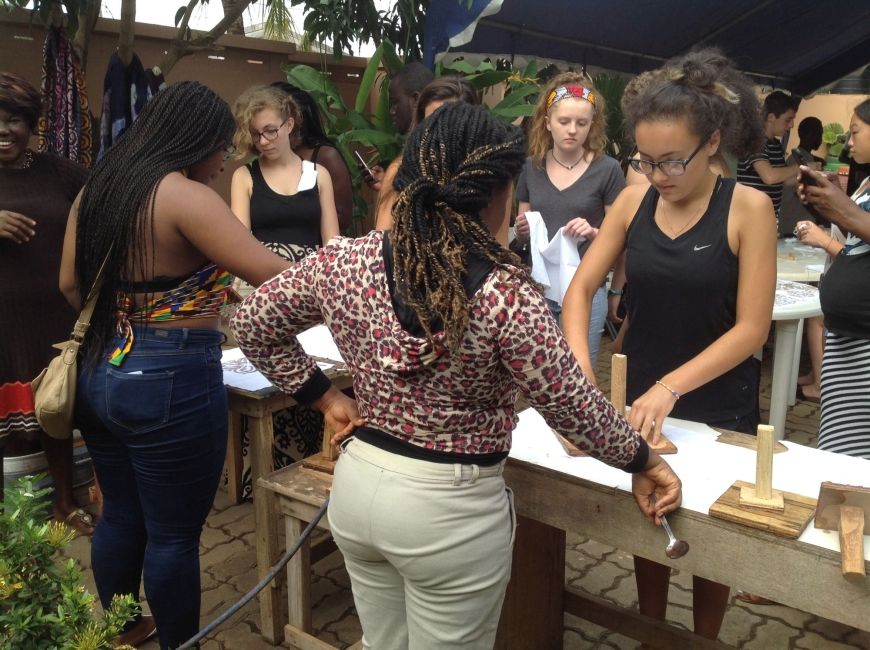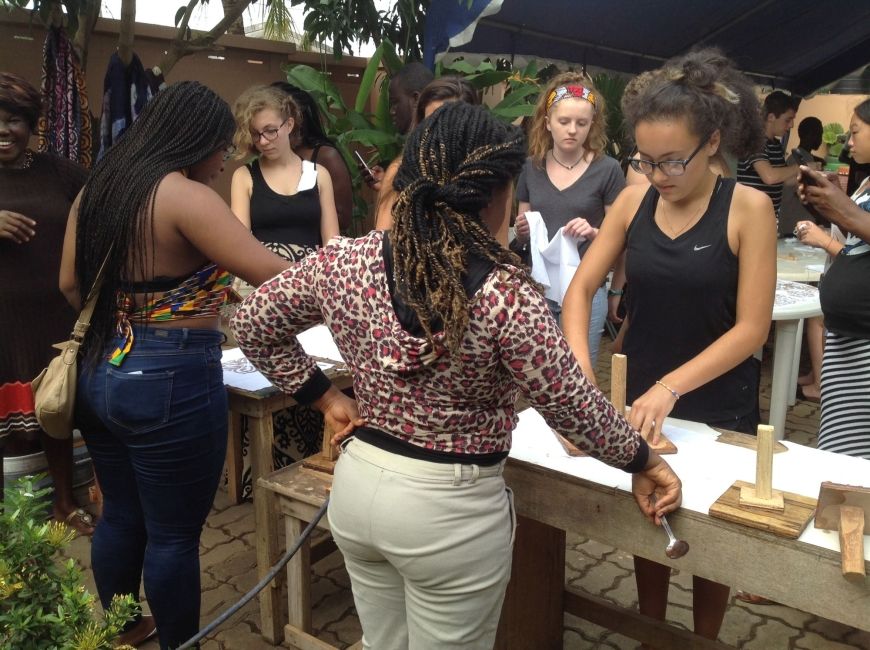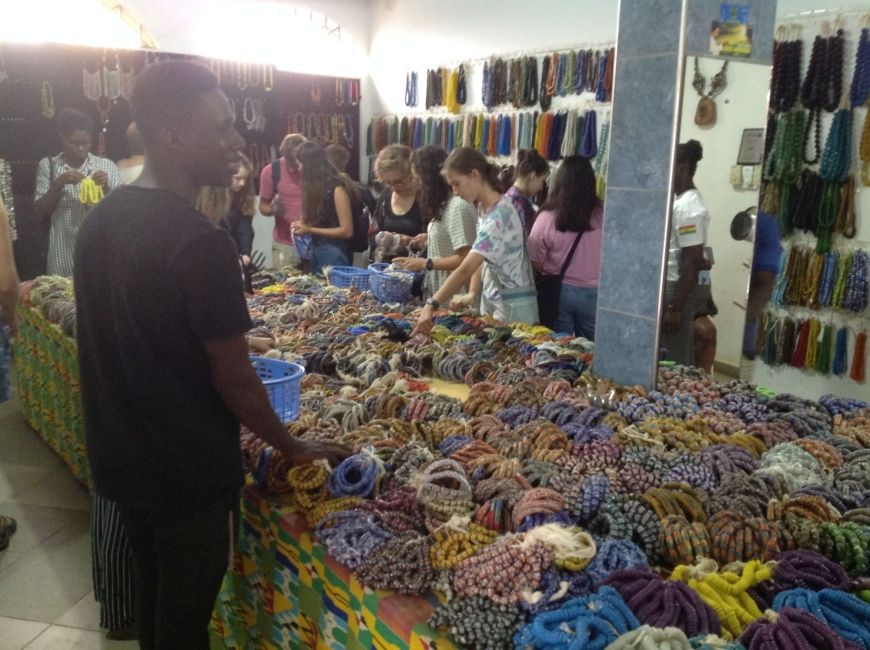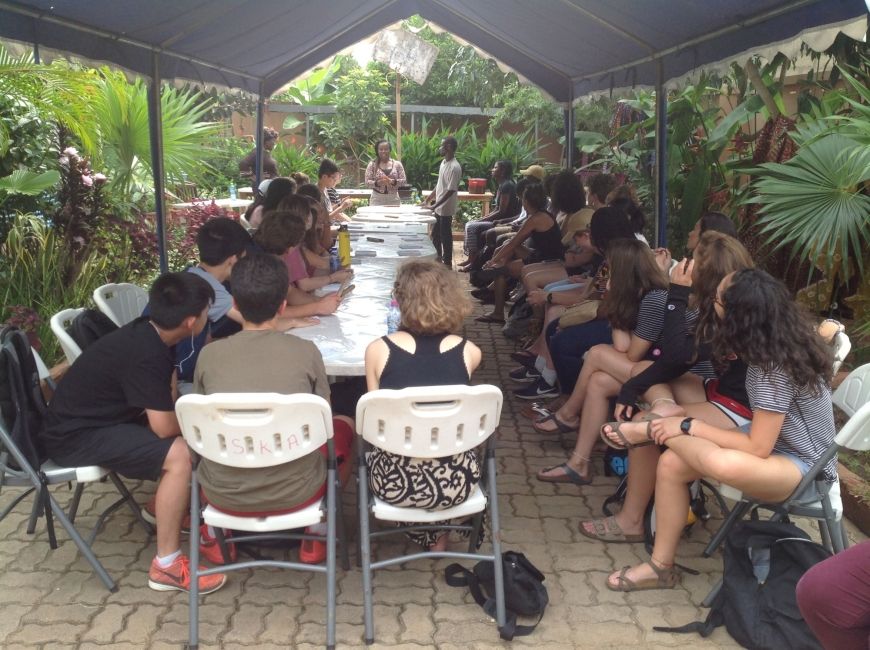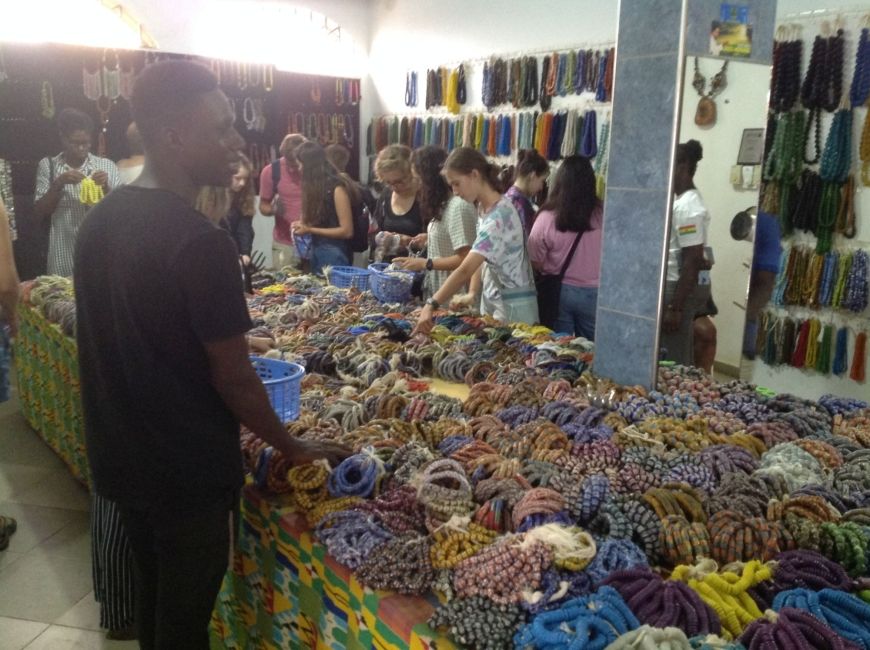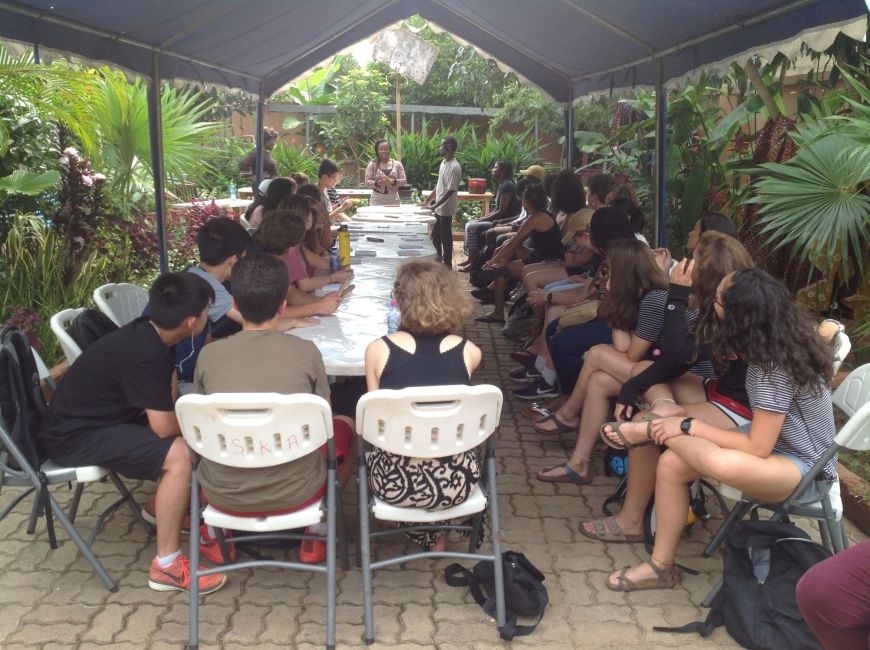A student's Perspective
Bead Making
The road to the bead factory was narrow, bumpy, heavy with traffic, and after such a rocky ride, I and many others expected to see something more or less like a traditional factory. But to our surprise, we found ourselves in front of an old building with a veritable ton of glass bottles—ranging from wine bottles to pickle jars—just inside the gate. Eyebrows raised, we turned towards our tour guide, a young man who had learned the craft from his family and could wax about any aspect of it. He explained that the pile of ugly glass bottles was not trash but raw materials that would be recycled into the beautiful beads that winked to us from the little gift shop. Our guide talked us through the process of making the beads, emphasizing that every single one was crafted hand. Looking at them, though (as I had the chance to when we were allowed to shop), you would never guess that such perfectly round, gloriously painted beads could be made by human hands. It still amazes me to think that this underwhelming exterior housed such immense talent. I know I am not the only one who left with a bag bursting with beads and a smile bright enough to match.
Tie-dye and Batik
After a quiet Sunday morning, we filed into the bus and headed towards the tie-dye workshop. All of us received two sheets of cotton cloth before our hostess, Auntie Vivian, began the Batik demonstration. Batik is a style of dyeing the originated in Africa, and it involves wax and, as I would learn, more skill than someone like me has. First, you dip the wooden mould into hot wax. Then, you press the mould to the cloth. Finally, you add the dye and wash with hot water. Sounds easy enough, right? Apparently, it’s easier said than done; I ended up with a splotchy, crusty square of cloth. Oh well, into the dye it goes. Thankfully, some people managed to create patterns, so the effort wasn’t wasted.
Next, we did tie-dye, which some had done back in the United States. However, the dye her was very different, carrying a pungent smell and glossy sheen that did not resemble the colours they were supposed to be. The first sheet we used—which was supposed to be purple and yellow—came out a garish mess of green and black! A little concerned, I handed over my bundle of cloth anyway. As it happened, Auntie Vivian had to step away, so I took over the job of removing the string from the bundles. Even though my hands weren’t in the dye like our host’s, my fingers still got stained a rainbow of colours. Once the activity was finished, I wandered over to the drying racks to see the end result. It was like magic! The ugly green had morphed into a cheery yellow, and the black had faded in to brilliant reds and purples. So, for all the mess we made, we still managed to create something beautiful.
Related Posts
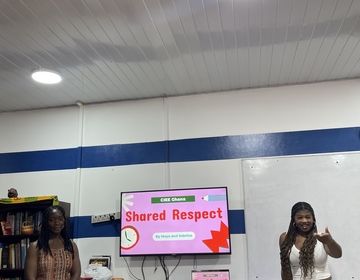
Student Project: Shared Respect
During this program, the participants worked in groups to create projects reflecting their experiential learning from the last three weeks. The following is a selection from Sabrina Addo and Maya... keep reading
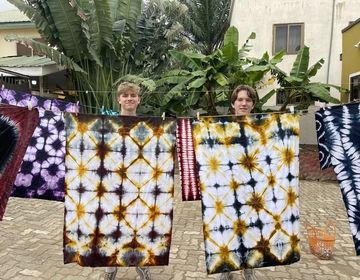
Tying Up Loose Ends
With only a few days left in our program, we are embracing every opportunity to make lasting memories and reflect on our incredible journey. One of the highlights of this... keep reading
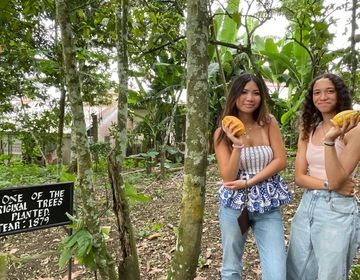
Visiting Ghana’s First Cocoa Farm
Student Blog Takeover: Milo and Anthea visit Ghana's first cocoa farm
